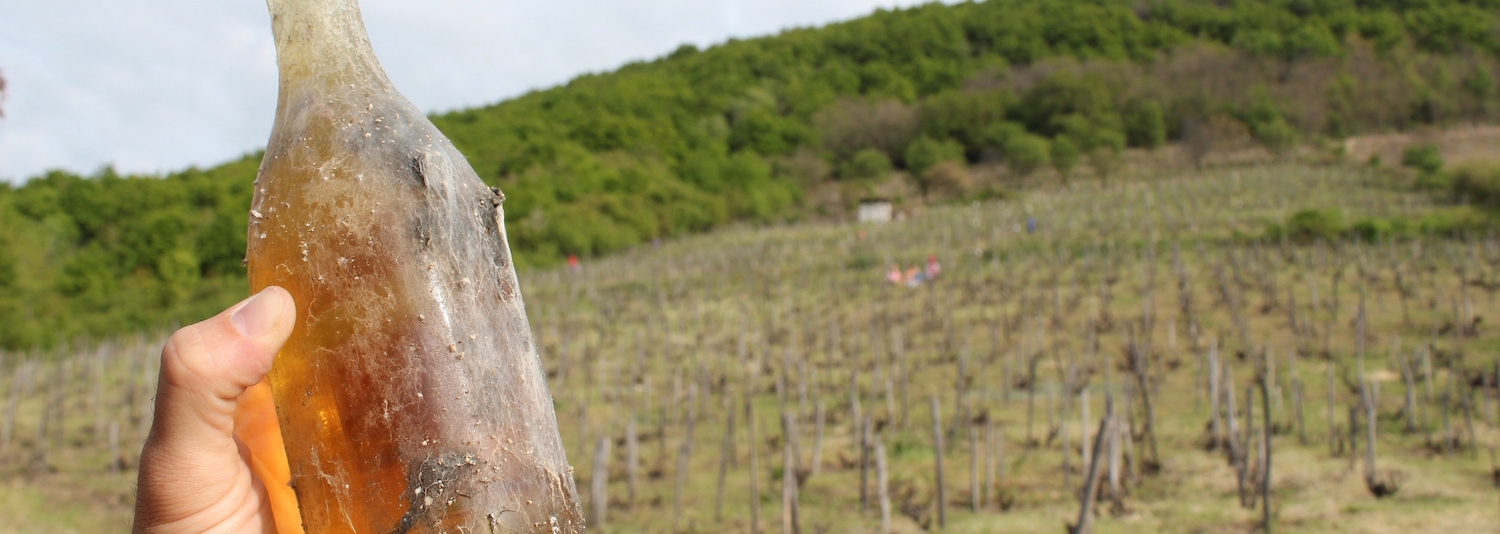

Tinon, Tokaj, Hungary
“My name is Szamorodni. I am shadow. Now I am my own shadow, a barrel hidden deep down inside a cellar. I have long fermented my last sugar remnant, forgotten my dashing youth, and apart from a few alert spirits, nobody knows what became of me.” — Samuel Tinon & Mathilde Hulot
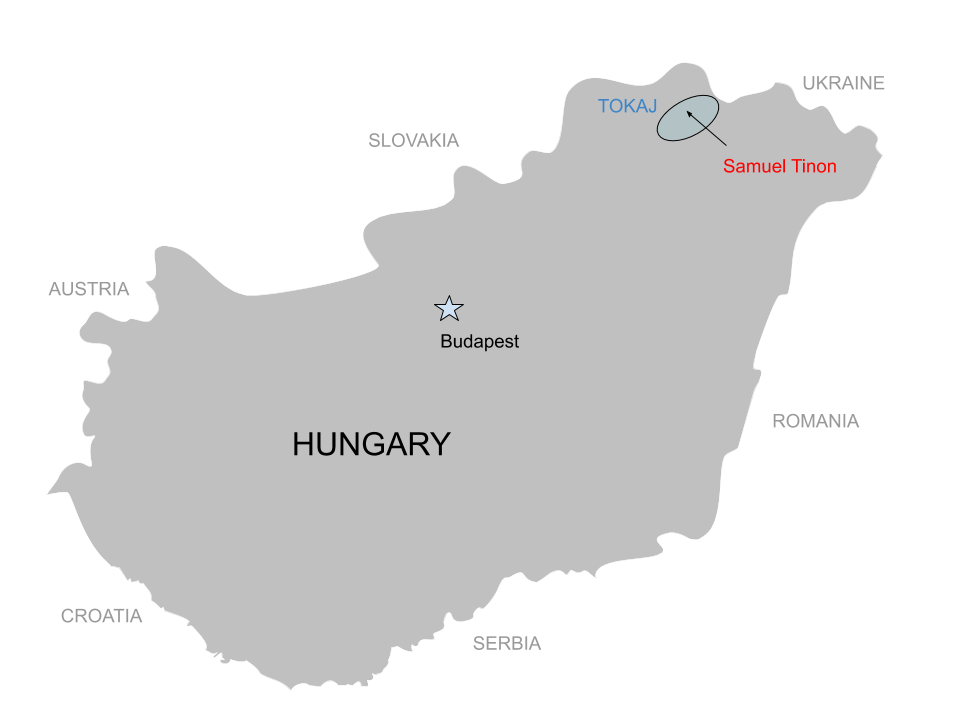
At a Glance
2000
http://samueltinon.com
Tokaj
Cool Continental
Volcanic base (tuffa, obsidian), broken up limestone and clay
150-250m
Low hills and landscapes of vines and forests
Furmint, Hárslevelű
8 hectares
Sustainable
Natural
http://samueltinon.com
Tokaj
Cool Continental
Volcanic base (tuffa, obsidian), broken up limestone and clay
150-250m
Low hills and landscapes of vines and forests
Furmint, Hárslevelű
8 hectares
Sustainable
Natural

Samuel Tinon
The people
Although born in the sweet wine appellation of Sainte-Croix-du-Mont in France, Samuel Tinon has chosen Tokaj as the best place to grow wine and raise his three children. He’s also quick to remind us all that Tokaj was the favored drink and muse for Leo Tolstoï, Pablo Néruda, Honoré de Balzac, Gustave Flaubert, Diderot, and Voltaire, so he’s already in good company. As the first Frenchman to settle in Tokaj in the modern privatization era, he’s also convinced that Tokaj possesses all the same greatness as Bordeaux, Champagne and Burgundy. For the past 500 years Tokaj has demonstrated distinctive terroirs, ideally suited grapes, and unique winemaking styles that according to Samuel, feels “privileged to be part of the active reconstruction of such a Great Wine area…the backbone of a very rich life.”
After consulting in Australia, Texas, Chile, Italy, traveling to the Jura and Jerez, and an additional 15 years just in Tokaj did he finally start his own production in 2000. What’s so compelling about his approach to farming, winemaking and representing Tokaj as a whole is that according to Samuel, “it's hard to find a good balance between paradoxal parameters, like conservatism and modernity, action and inaction, convictions and doubts, choices with short/medium/long term, national and international. It is a permanent challenge with Nature and human relations. And it's full of discoveries.” Keeping these sentiments in mind, his wines are among the most transportative, delicious and intellectual we’ve encountered.
He also covers the entire range of traditional Tokaj from Dry Szamorodni, Sweet Szamorodni, Tokaji Aszú, and finally Eszencia. That said, what he makes in a given vintage is determined more by the conditions in the vineyard and the cellar than what the market wants. As Samuel says, “It is not I who is driving the wines, the wines are driving me!"
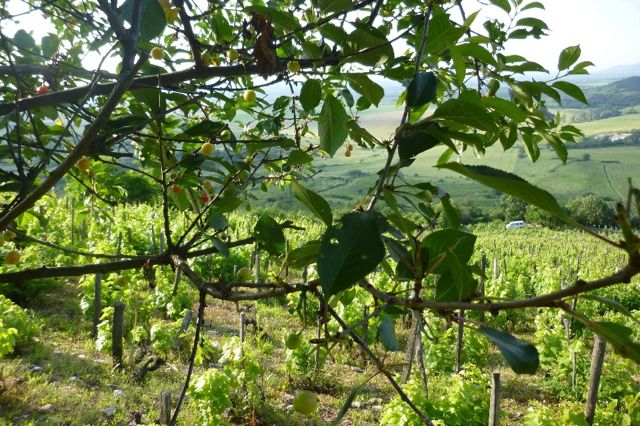
The Határi vineyard
Vineyards
Setting up shop in the village of Olaszliska just north of the village of Tokaj near the banks of the famous Bodrog River, Samuel farms roughly 5 hectares in this area (Határi vineyard) and an additional couple of hectares on the slopes of Mt. Tokaj. The soils on Határi have a 15 million year old volcanic base (tuffa, obsidian), broken up limestone and clay. With 10,000 plants per hectare (90% Furmint, 10 % Hárslevelű), and some as old as 90 years, no herbicides or pesticides are used and no tractor usage. Everything is done by hand.
The vineyards on Mt. Tokaj are predominately Loess (the only loess in the appellation is found here) and the same approach to viticulture is employed. On Mt. Tokaj the elevation and wind are key and at Határi the bordering Zemplén forest protects the vines from the frigid wines from the North. As arguably the first classified vineyard appellation system in the world, there is over 500 years of trial and error at work in the region.
The vineyards on Mt. Tokaj are predominately Loess (the only loess in the appellation is found here) and the same approach to viticulture is employed. On Mt. Tokaj the elevation and wind are key and at Határi the bordering Zemplén forest protects the vines from the frigid wines from the North. As arguably the first classified vineyard appellation system in the world, there is over 500 years of trial and error at work in the region.
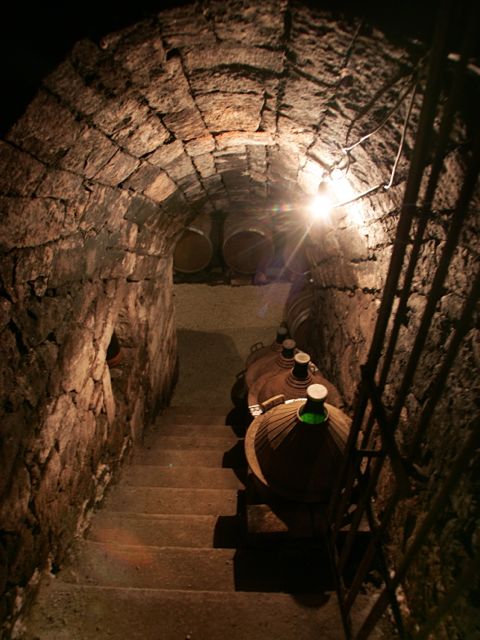
Winemaking
Samuel makes traditional Szamorodni — dry and sweet, Tokaji Aszú, and Eszencia. Originally called Ordinárium (ordinary wine) in the 1600’s, Főbor (prime wine) after that, and later, due to the immense popularity in the Polish market, Szamorodni (as comes off the vine) became the official name (itself a Polish word) in the early 1800’s. In short, this refers to healthy, shriveled and botrytized grapes all being harvested and fermented together. After some short skin contact the grapes are pressed into barrel for a minimum of two years for the sweet Szamorodni. The resulting wine is less oxidative than a traditional Aszú and much less than a dry Szamorodni, and yet extremely concentrated given its naturally high dry extract.
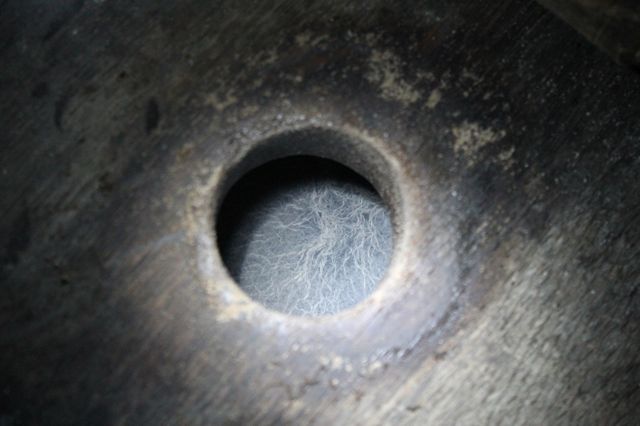
Flor on the Szamorodni
Dry Szamorodni goes a few steps further by adding Claspodorium cellare (a special mold that covers the entire cellar) and a native yeast veil (flor) that protects the wine in barrel. Not only are these yeasts specific to Tokaj's volcanic cellars, but the evaporation rate is also the reverse of Jerez in that alcohol evaporates without water loss so the wines actually lose .5% alcohol each year. For Samuel, it was actually by mistake and luck that he realized he could make one. He had two barrels of 2001 Aszú that seemed destined to spoil and actually marked them as “throw away” in the cellar log. He happened to hold onto them over the summer only to discover that the yeasts had changed the wine into Szamorodni. Nature gave the gift and Tinon perceived it as such and is now determined to explore and preserve its production. In any case, after one night of maceration on the skins, primary fermentation took about three weeks. After 6 months on the lees, the first blending took place and the resulting wine spent 5 years in 220L barrels with both previously mentioned cellar micro-organisms at work. The final blend was made after these 5 years. This is the only dry wine made from Botrytized grapes (and certainly under flor) and perhaps the reason why the Comte de Chalon came from the Jura to live out his life in Tokaj.
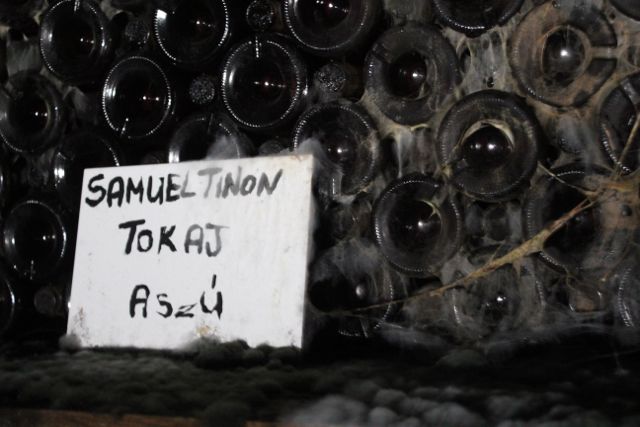
For the 5 Puttonyos, the residual sugar must have a minimum of 120 g/l. Aszú berries are mashed into a super sweet thick black paste and macerated in a finished dry wine for a month. After a long and slow 2 years of barrel fermentation, Samuel is careful to never hermetically seal off the wine — there is always contact with oxygen. This balance between building good oxidation into the wine brings out an incredible aromatic profile. The wine also finishes so stable that no sulphur is added at any time.
Also learn more about Tokaj and Samuel's wines in this brochure

Flor on the Szamorodni
Dry Szamorodni goes a few steps further by adding Claspodorium cellare (a special mold that covers the entire cellar) and a native yeast veil (flor) that protects the wine in barrel. Not only are these yeasts specific to Tokaj's volcanic cellars, but the evaporation rate is also the reverse of Jerez in that alcohol evaporates without water loss so the wines actually lose .5% alcohol each year. For Samuel, it was actually by mistake and luck that he realized he could make one. He had two barrels of 2001 Aszú that seemed destined to spoil and actually marked them as “throw away” in the cellar log. He happened to hold onto them over the summer only to discover that the yeasts had changed the wine into Szamorodni. Nature gave the gift and Tinon perceived it as such and is now determined to explore and preserve its production. In any case, after one night of maceration on the skins, primary fermentation took about three weeks. After 6 months on the lees, the first blending took place and the resulting wine spent 5 years in 220L barrels with both previously mentioned cellar micro-organisms at work. The final blend was made after these 5 years. This is the only dry wine made from Botrytized grapes (and certainly under flor) and perhaps the reason why the Comte de Chalon came from the Jura to live out his life in Tokaj.

For the 5 Puttonyos, the residual sugar must have a minimum of 120 g/l. Aszú berries are mashed into a super sweet thick black paste and macerated in a finished dry wine for a month. After a long and slow 2 years of barrel fermentation, Samuel is careful to never hermetically seal off the wine — there is always contact with oxygen. This balance between building good oxidation into the wine brings out an incredible aromatic profile. The wine also finishes so stable that no sulphur is added at any time.
Also learn more about Tokaj and Samuel's wines in this brochure

White Wine
Furmint;
13%
1.4 g/l
6.9 g/l
Furmint;
13%
1.4 g/l
6.9 g/l
“Birtok” roughly translates to “domain” and allows various vineyards to be blended together. For Samuel Tinon, this means pulling from the famed Határi vineyard near the village of Olaszliszka and off of the dense loess slopes of Mt. Tokaj above the village of Tokaj. Blending these two sites yields an intensely unique Furmint. The fruit is ripe, the acids are high and there’s plenty of structure to create a pungent balance. It’s like taking the weight and creamy texture of Chenin Blanc and the acidic edge and stony fruit of Riesling and mashing them together with smoke and salt. White wine like this can only come from Tokaj.

White Wine
Furmint; Hárslevelű;
13.8%
2.4 g/l
5.5 g/l
Furmint; Hárslevelű;
13.8%
2.4 g/l
5.5 g/l
Originally called Ordinárium (ordinary wine) in the 1600’s, Főbor (prime wine) after that, and later, due to the immense popularity in the Polish market, Szamorodni (as comes off the vine) became the official name (itself a Polish word) in the early 1800’s. The name refers to healthy, shriveled and botrytized grapes all being harvested and fermented together. Dry Szamorodni goes a few steps further by adding Claspodorium cellare (a special mold covering the entire cellar) and a native yeast veil (flor) that protects the wine in barrel. Not only are these yeasts specific to Tokaj’s volcanic cellars, but the evaporation rate is also the reverse of Jerez in that alcohol evaporates without water loss so the wines actually lose .5% alcohol each year.
Samuel Tinon made his first Szamorodni by mistake and luck: two barrels of 2001 Aszú that seemed destined to spoil and were marked “throw away” developed a veil of yeast over the summer and were changed into Szamorodni.
After one night of maceration on the skins, primary fermentation of the wine took about three weeks. After 6 months on the lees, the first blending took place and the resulting wine spent 5 years in 220L barrels with both previously mentioned cellar micro-organisms at work. The final blend was made after these 5 years.

White Wine
Furmint;
12.7%
2.2 g/l
9.18 g/l
Furmint;
12.7%
2.2 g/l
9.18 g/l
Overlooking the city of Sárospatak on Megyer Hill, it’s hard to miss this site. Planted in deep red soil at the foot of Tengerszem aka The Eye of Sea. This was a former quarry turned lake and subsequent nature preserve. An iconic place in Tokaj. 22 miles north of the village of Tokaj, this represents the northern face of Furmint and certainly offers some commentary on climate change. Hand harvested and directly pressed in Hungarian oak, it spent 9 months on the lees. Nearly double digit total acidity backed by only a few grams of residual sugar, this is a pungent and powerful look at Furmint. In some vintages, alcohol can hit far above this 12.% and closer to 15% while still in perfect balance.

White Wine
Furmint;
13.3%
3.1 g/l
8.9 g/l
Furmint;
13.3%
3.1 g/l
8.9 g/l
Planted in the 1960s in red clay flush with volcanic rhyolite and zeolite, the 2021 was hand harvested, directly pressed into Hungarian oak barrels and followed by 9 months on the lees. We’ve been tasting this site from Samuel since the 2012 vintage was unveiled at the first ever Great Tokaj Auction. Not lacking in acidity with a kiss of residual sugar that is absolutely needed, this also has structure, skin tannins and richness wrapped in a refreshing package.

Dessert Wine
Furmint; Hárslevelű;
10.5%
179 g/l
8.5 g/l
Furmint; Hárslevelű;
10.5%
179 g/l
8.5 g/l
After a long and slow 2 years of barrel fermentation, Samuel is careful to never hermetically seal off the wine — there is always contact with oxygen. This balance between building good oxidation into the wine brings out an incredible aromatic profile. The wine also finishes so stable that no sulphur is added at any time. While many modern renditions of Tokaji Aszú attempt to limit or completely starve the wine of oxidation, Samuel embraces the traditional practices of Tokaj and exposes the wine to oxygen from start to finish. This intentionally good oxidation has coaxed out spicy eastern aromatics in tandem with a high level of sweetness and acidity. This is not simply a dessert wine, but rather something to throw at anything pungent and or spicy. Money allowing, it’s amazing to deglaze meats and fish with it as well. According to Samuel, it’s also “ideal with pancakes, by the fireside after a long walk.”